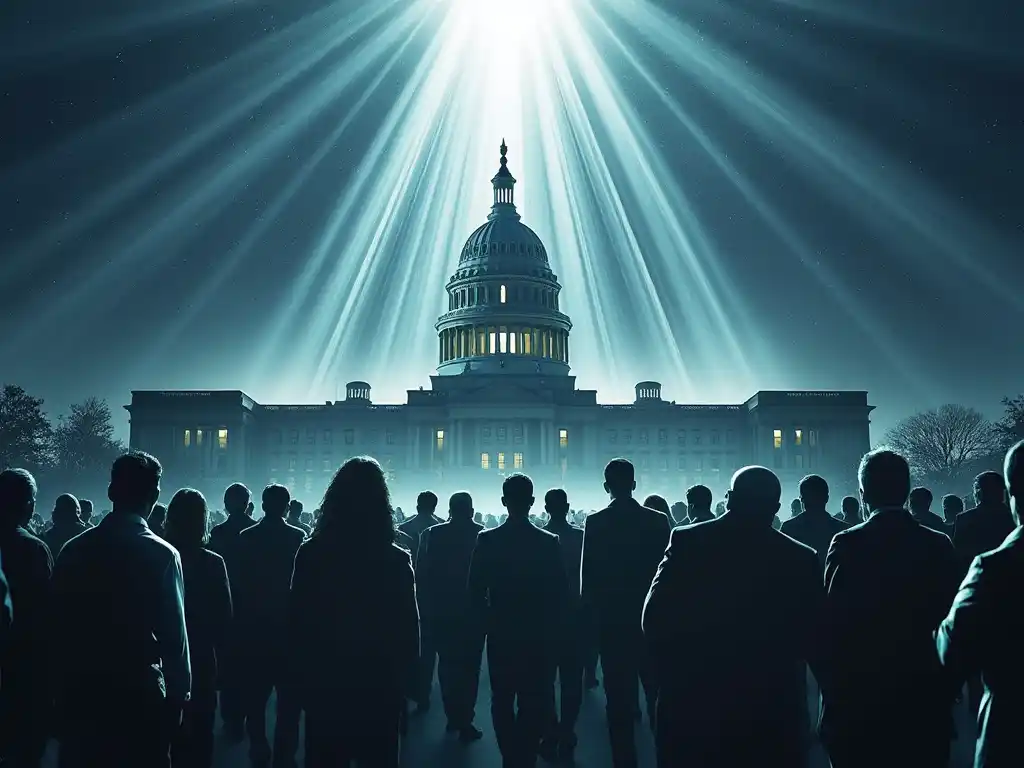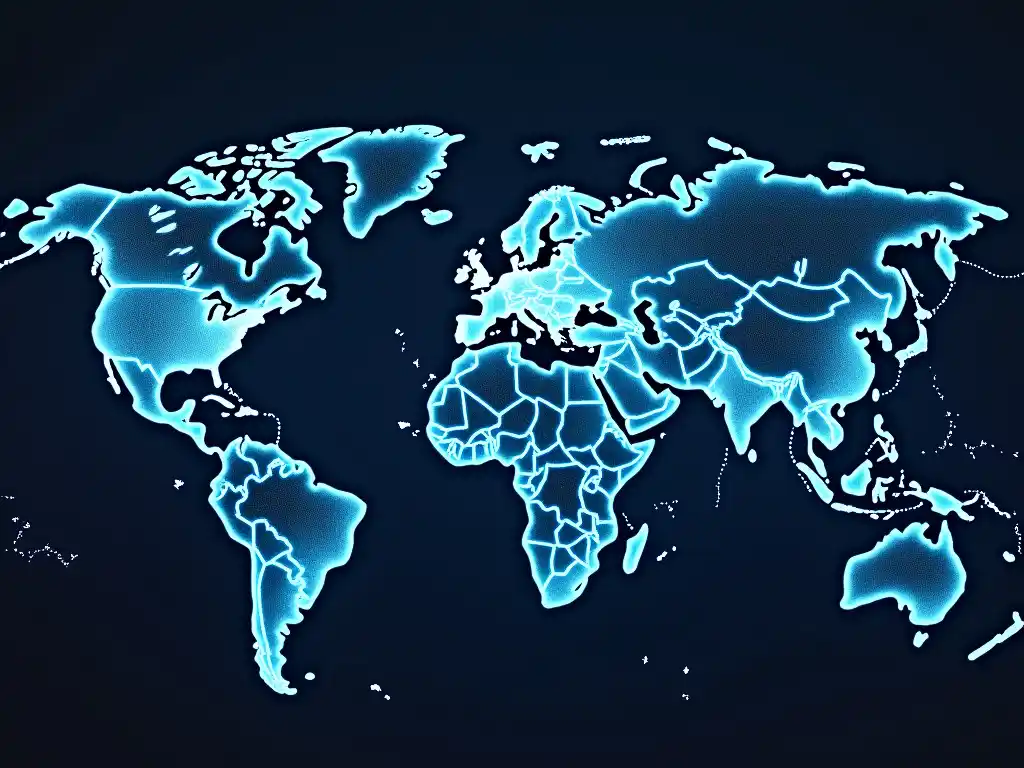Abstract:

1. Introduction
For decades, environmental standards in Canada were largely shaped by a network of professional associations, scientific organizations, and academic institutions. Engineers, applied science technologists, geoscientists, and other credentialed professionals not only practiced under rigorous ethical and professional codes but also actively influenced the regulatory frameworks guiding environmental protection. Over the past two decades, however, this decentralized model of expertise-driven standard-setting has undergone significant transformation. Centralized governmental agencies, responding to public pressure, global environmental commitments, and political considerations, have stepped in to set and enforce standards that once fell within the domain of professional associations and scientific bodies (Doern & Reed, 2000; Boyd, 2003).
This shift is not solely a regulatory curiosity; it represents a deeper tension between the autonomy of expert communities and the policy imperatives of elected governments. As Canada navigates pressing challenges — ranging from climate change mitigation and adaptation (Bush et al., 2014) to sustainable resource management — the structure of standard-setting could shape the nation’s environmental trajectory. The purpose of this report is to critically assess how and why this centralization has occurred, what the legal and ethical implications are, and how professionals can engage constructively with these changes to maintain scientific integrity and public trust.
2. Historical Context: Decentralized Expertise and Self-Regulation
Historically, the authority to define and maintain professional standards in fields such as engineering, geoscience, and applied science lay with self-regulatory professional bodies. Provincial statutes, such as the Engineering and Geoscience Professions Act in Alberta and the Engineers and Geoscientists Act in British Columbia, and the Applied Science Technologists and Technicians Act in British Columbia, granted these associations (e.g., APEGA (Association of Professional Engineers and Geoscientists of Alberta), Engineers and Geoscientists BC, ASTTBC (Applied Science Technologists & Technicians of BC) statutory authority to license practitioners, set codes of ethics, and enforce standards of practice (Zussman, 1997). Through their licensing criteria, continuous professional development requirements, and formal disciplinary mechanisms, these organizations ensured that environmental assessments, resource evaluations, and infrastructure planning were informed by technical proficiency and professional integrity.
Academic and research institutions further underpinned this decentralized model. Universities and independent research bodies produced peer-reviewed work that informed best practices, while professional guidelines — such as Engineers Canada’s National Guideline on Sustainable Development and Environmental Stewardship for Professional Engineers— translated this science into robust professional standards (Engineers Canada, 2016). This system paralleled a “free-market” model of expertise: rather than centralized intervention, the “market” of professional knowledge and peer review fostered innovation, quality assurance, and context-sensitive solutions.

3. Government Intervention and Policy-Making: Legislative and Institutional Evolution
While professional bodies historically regulated practice, governments shaped policy landscapes through broad legislation and national strategies. Key federal statutes like the Canadian Environmental Protection Act, 1999 (CEPA) and, later, the Impact Assessment Act (2019) established overarching frameworks for environmental assessment, emissions standards, and pollution control. Provincial and territorial regulations complemented these, often referencing professional standards without directly imposing them. Governments depended on professional input to inform policy, ensuring that laws and guidelines reflected current scientific understanding and technical feasibility (Winfield, 2016).
However, as international agreements such as the Paris Agreement (UNFCCC, 2015) and evolving public sentiment on climate change demanded rapid and visible action, the federal and provincial governments increasingly introduced stringent and often prescriptive regulations. Measures like the Greenhouse Gas Pollution Pricing Act (2018) and various sector-specific directives began to standardize environmental targets and compliance protocols. While these initiatives served the laudable goal of ensuring accountability and meeting global commitments, they also began to displace the latitude professionals once had to tailor solutions to local conditions and emerging scientific insights.

4. The Centralization Trend: Causes and Consequences
Several factors contributed to this centralization. The urgency of climate change and biodiversity loss, combined with heightened media scrutiny and public expectations, created a political environment in which immediate action became paramount. Elected officials, often pressed to deliver measurable results within electoral cycles, turned to top-down regulations that sidestepped the slower, consensus-driven processes of professional associations (Pralle, 2009). The result was a regulatory environment in which governments increasingly defined the “what” and “how” of environmental protection, reducing the space for professional bodies to set nuanced standards grounded in field experience and evolving science.
This centralization can lead to what might be termed “regulatory displacement.” The authority of professionals to determine key parameters —be it acceptable levels of contaminants, safe operating practices for resource extraction, or optimal methodologies for impact assessments — is curtailed. Professionals may find their code of ethics difficult to uphold if legal mandates conflict with best practices. For example, an engineer bound by a professional code that requires prioritizing public welfare and environmental stewardship may struggle if mandated government standards are less stringent than those recommended by current scientific consensus. Alternatively, overly restrictive, politically motivated standards may be technically unfeasible, placing professionals in a position of either non-compliance or costly over-engineering.

5. Potential Weaknesses and Risks: Politicization, Professional Integrity, and Public Trust
Centralization raises several interrelated risks. First, there is the politicization of science. When governments set standards based on political imperatives rather than peer-reviewed evidence, policy may become out of step with established scientific understanding. This can erode environmental outcomes, leading to regulations that are either insufficiently protective or practically unworkable (Harrison, 2007).
Second, the professional integrity that once undergirded environmental standards can be undermined. If professionals are no longer the primary arbiters of technical guidelines, their role shifts from authoritative experts to regulatory implementers. This loss of autonomy can reduce the incentive to stay at the leading edge of best practices or to challenge outdated, arbitrary, or politically expedient standards. The codes of ethics maintained by professional associations, which historically ensured that professionals served the public interest by adhering to scientific rigour, may be diluted if these same professionals lack the authority to influence the standards they must enforce.
Third, public trust — the cornerstone of effective governance — is at stake. A public that perceives environmental policy as driven by short-term political gains rather than informed expertise may grow cynical about environmental commitments. This cynicism can manifest as reduced compliance, political backlash, and less support for necessary but complex reforms. In turn, a deterioration in trust can undermine long-term sustainability goals and hinder collaborative problem-solving among stakeholders.

6. Comparative Perspectives and the Need for Re-balancing
The Canadian situation is not unique. Other jurisdictions wrestle with the interplay between professional self-regulation and government-led environmental policy. The United Kingdom’s post-Brexit reorganization of environmental oversight institutions (Burns et al., 2019) and Australia’s federal-state interactions on resource management (Hussey & Dovers, 2007) both highlight how political pressures can reshape the balance of regulatory authority. Canada can learn from these experiences by considering models that retain robust professional input while enabling the government to meet international obligations and public expectations.
Re-balancing the relationship between professionals and policymakers may involve structured consultation frameworks that mandate expert review of proposed standards, greater transparency in decision-making processes, and legal provisions that protect the integrity of professional codes of ethics. Embedding technical advisory panels, drawn from professional associations, into the legislative process could ensure that regulations align more closely with scientific realities. Ensuring that professionals have meaningful input— even if final decision-making authority rests with elected officials — can preserve expertise-driven nuance, improve policy efficacy, and reinforce public trust.

7. Conclusion: Reconciling Centralization with Scientific Rigour and Professional Ethics
The shift from decentralized, expert-driven standard-setting to centralized, government-led environmental regulation in Canada signals a critical juncture. Without careful re-calibration, the nation risks politicizing environmental science, diminishing professional standards, and undermining public confidence. By recognizing the value of professional autonomy, ensuring meaningful integration of expert advice into policy, and maintaining transparency in how standards are set, Canada can build a regulatory architecture that is both democratically accountable and scientifically sound.
Ultimately, the question is not whether government should set policy goals — clearly, democratically elected bodies have that mandate — but how to ensure that technical standards, implementation strategies, and evaluation criteria remain firmly rooted in professional expertise.This approach honours Canada’s tradition of strong professional regulatory frameworks while meeting the pressing ecological challenges of our time.

8. References
-
Boyd, D. R. (2003). Unnatural Law: Rethinking Canadian Environmental Law and Policy. UBC Press.
-
Burns, C., Jordan, A., Gravey, V., & Zito, A. (2019). De-Europeanising or disengaging? EU environmental policy and Brexit. Environmental Politics, 28(2), 271–292.
-
Bush, E. & Lemmen, D.S. (Eds.). (2014). Canada in a Changing Climate: Sector Perspectives on Impacts and Adaptation. Government of Canada.
-
Doern, G.B. & Reed, T. (2000). Risky Business: Canada’s Changing Science-Based Policy and Regulatory Regime. University of Toronto Press.
-
Engineers Canada. (2016). National guideline on sustainable development and environmental stewardship for professional engineers. Available at: [Engineers Canada website]
-
Harrison, K. (2007). The Regulator’s Dilemma: Regulation of Greenhouse Gas Emissions in Canada. In G.B. Doern (Ed.), How Ottawa Spends 2007–2008. McGill-Queen’s University Press.
-
Hussey, K. & Dovers, S. (2007). Managing water for Australia: The social and institutional challenges. CSIRO Publishing.
-
Pralle, S. (2009). Agenda-setting and climate change. Environmental Politics, 18(5), 781–799.
-
UNFCCC (2015). Paris Agreement. Available at: [UNFCCC website]
-
Winfield, M.S. (2016). Blue-Green Province: The Environment and the Political Economy of Ontario. UBC Press.
-
Zussman, D. (1997). Measuring Performance in the Public Sector. In G. Swimmer (Ed.), How Ottawa Spends 1997–1998. McGill-Queen’s University Press.

9. Appendix: Evolving Roles of Professionals and Governments in Canada (Pre-2015 vs. Post-2015)
9.1. Contextual Note:
9.2. Pre-2015 Landscape: Decentralized, Expert-Driven Models
9.2.1. Role of Professional Bodies (Associations, Colleges, Institutes):
-
Standard-Setting and Ethics: Professional associations often led in defining technical standards, codes of ethics, and practice guidelines. Expertise and peer review shaped these benchmarks, reflecting evolving best practices and disciplinary norms.
-
Certification, Licensing, and Discipline: Statutory authority allowed these bodies to license qualified practitioners, ensuring that entry into the profession required demonstrable competence. Continuous professional development and disciplinary procedures helped maintain high standards and public trust.
-
Advisory Functions to Government: Professionals frequently provided expert advice to policymakers, aiding in the translation of complex technical issues into workable policy frameworks. While governments enacted overarching legislation, they often leaned on professional consensus to inform regulations, allowing experts to shape many technical details.
9.2.2. Role of Governments (Federal, Provincial, Territorial):
-
Broad Policy Direction and Goals: Governments established overarching objectives in areas like public safety, economic growth, and sustainable resource management. Regulatory frameworks frequently incorporated standards developed by professional bodies, leveraging their technical rigour.
-
Implementation and Enforcement in Collaboration with Professionals: Governments enforced legal requirements informed by professional guidelines, and professionals advised on feasibility and periodic updates. This collaborative model enabled flexible adaptation of standards as technology and best practices evolved.
9.2.3. Characteristics of the Pre-2015 Worldview:
-
Autonomy and Trust: Professionals enjoyed considerable influence in setting the “how” of standards, supported by public confidence in their expert-driven processes.
-
Flexibility and Innovation: Professional-led standards could adapt relatively swiftly to new scientific insights, emerging technologies, and sector-specific challenges.
-
High Credibility: Strong alignment between professional consensus and regulatory frameworks bolstered public trust in both professionals and governance systems.
9.3. Post-2015 Landscape: Centralized, Government-Led Directives
9.3.1. Role of Governments:
-
Direct Definition of Technical Criteria: Governments, facing increased political, economic, and global pressures, began to specify detailed requirements, thresholds, and methods more frequently. Swift policy-making cycles sometimes afforded less time for extended consultation with professional bodies.
-
Reduced Reliance on Independent Professional Judgment: Professional associations, once standard-setters, may now find themselves primarily implementing or advising on government-mandated criteria rather than co-creating them. Political timelines, trade commitments, or international agreements can shape standards, potentially overshadowing the nuanced input of experts.
9.3.2. Role of Professional Bodies and Experts:
-
Constrained Influence on Shaping Standards: While still responsible for licensing and ethics, professional groups often have less authority to adjust technical guidelines if these conflict with government-defined goals. Proposals for refinement or context-specific adjustments may not always be integrated, especially if they challenge politically established benchmarks.
-
Focus on Compliance and Execution: Professionals increasingly operate within pre-defined frameworks, ensuring compliance rather than developing the criteria themselves. Ethical principles remain, but can be harder to fully realize if regulations do not align with the best available technical evidence or practical considerations.
9.3.3. Characteristics of the Post-2015 Worldview:
-
Politicization of Standards: Technical benchmarks can reflect political agendas or timelines, potentially at odds with evidence-based best practices.
-
Diminished Professional Autonomy: With less say in defining standards, experts may find it harder to innovate or tailor approaches to local or industry-specific needs.
-
Risk to Public Confidence: Perceptions that standards are shaped more by political expediency than professional wisdom may erode the trust and credibility that once supported effective governance.
9.3.4. Key Differences and Implications
Before:
-
Professionals held a substantial role in shaping technically sound, context-sensitive benchmarks.
-
Government frameworks often integrated these expert-driven standards, balancing policy accountability with deep technical insight.
-
Government agencies increasingly prescribe technical details, potentially bypassing the depth and adaptability of professional expertise.
-
This shift may strain professionals’ ability to maintain standards that are both ethically robust and attuned to advancing knowledge.
9.3.5. Warnings and Potential Consequences:
-
Erosion of Professional Integrity: If professionals cannot advocate effectively for best practices, their moral and technical authority could wane over time.
-
Stagnation of Technical Excellence: Without continuous professional input at the standard-setting level, Canada risks lagging in innovation and global competitiveness.
-
Public Skepticism: Awareness of political influence in standard-setting could lead to diminished public trust, challenging the legitimacy and effectiveness of the regulatory system.
9.3.6. Conclusion

10. A Quote To Remember
“In the past, professional communities in Canada, including those in British Columbia, conducted the technical analyses and set the standards, while governments translated these expert conclusions into policy frameworks. Although governments always held ultimate legislative authority, professionals enjoyed substantial autonomy in originating and refining technical norms.”
“With the advent of legislation like British Columbia’s Professional Governance Act (2019), however, this clear delineation is fading. Now, governments increasingly define technical criteria and exert direct authority over previously expert-led domains, leaving professionals to implement rather than originate standards.”
“This shift not only alters the balance of responsibility and authority, but, as policy analysts and professional bodies have noted, it also raises concerns about the analytical integrity, adaptability, and public trust that once stemmed from a more balanced, expert-driven approach. While these changes may not be uniform across every profession or sector, they reflect a recognized trend toward more prescriptive, government-led oversight in Canada’s environmental governance landscape.”

11. Lessons from History: A Cautionary Reflection on Centralized Control of Science and Expertise
-
Politicization of Science: In Nazi Germany, scientific inquiry was subordinated to the ideological goals of the state. Science that did not align with Nazi racial theories or state policies was suppressed or ignored. Parallels: Modern centralization could create an environment where certain scientific findings are marginalized if they conflict with predefined policy goals, potentially reducing the sphere of unbiased inquiry.
-
Erosion of Independent Professional Bodies: Under the Nazi regime, professional associations were either dissolved, merged into state-controlled organizations, or forced to align with Nazi doctrine. Independent professional judgment was replaced by state-directed mandates. Parallels: If professional bodies lose their authority to set standards and are required to implement politically determined criteria, their role becomes less about independent expertise and more about carrying out state directives.
-
Ideology Over Evidence: Nazi policies, such as racial hygiene, were imposed despite scientific evidence to the contrary. Expertise that contradicted the state’s narrative was dismissed or persecuted. Parallels: Modern governments asserting control over technical standards might be tempted to privilege certain policy narratives over neutral, evidence-based recommendations, risking outcomes that prioritize political agendas over factual accuracy.
-
Reduced Autonomy and Self-Regulation: Scientists and professionals in Nazi Germany had limited freedom to question or refine standards independently; noncompliance risked severe personal and professional consequences. Parallels: While not nearly as extreme today, a trend toward diminishing professional autonomy may discourage open debate, constructive criticism, and the natural evolution of standards guided by expert consensus rather than political expediency.
-
State-Determined “Truth”: In the Soviet Union, the state frequently declared what constituted acceptable scientific truth, with dissenting scientific perspectives (e.g., genetics research under Lysenkoism) suppressed. Parallels: Governments setting rigid standards could limit the scope for scientific consensus to shape policy, potentially labelling certain lines of inquiry or conclusions as unacceptable if they run counter to set agendas.
-
Lysenkoism and the Suppression of Dissent:Soviet authorities enforced the agronomist Trofim Lysenko’s theories, despite broad scientific consensus against them, punishing scientists who disagreed. Science served political dogma rather than objective inquiry. Parallels: Even in democratic contexts, if government standard-setting overrides professional judgment consistently, it could discourage experts from advocating evidence-based alternatives, fearing professional repercussions or marginalization.
-
Centralized Control Over Professional Education and Credentials:The Soviet state directed education and research institutions, determining curricula and permissible research areas, ensuring that professional training aligned with ideological objectives. Parallels: Modern regulatory frameworks could increasingly dictate not just standards of practice but also the frameworks for professional development and licensing, narrowing the intellectual space for independent thought.
-
Instrumental Use of Expertise: Soviet authorities employed scientists and engineers as tools for achieving five-year plans and other state objectives, often disregarding feasibility and scientific evidence. Parallels: If governments rely primarily on professionals to implement politically motivated standards without room for debate, professionals become instruments of policy execution rather than sources of expert guidance.
-
Top-Down Mandates and Campaigns: Maoist China and subsequent Communist Party-led initiatives often set broad, politically driven campaigns (e.g., the Great Leap Forward) that demanded compliance from technical experts, despite obvious technical shortcomings. Parallels: A strong, centralized government might set ambitious targets and standards that professionals must meet, even if these targets are not fully informed by scientific consensus or pragmatic considerations.
-
Political Criteria Over Expertise in Career Advancement: In various phases of Chinese governance, loyalty to the party line could outweigh technical competence as a factor in professional advancement. Parallels: If professional recognition, leadership roles, or influence increasingly depend on alignment with government-set standards rather than demonstrated expertise, it could undermine meritocracy and the credibility of professional institutions.
-
Control Over Information and Data: The Chinese state often exercises tight control over data, research findings, and dissemination of scientific information, shaping the narrative and limiting transparency. Parallels: Greater government control in setting environmental and technical standards might come with more selective use of data, restricting the availability of comprehensive, unbiased information that professionals need to challenge or improve standards.
-
Reduced Space for Independent Policy Input: Expert input in China is often channelled through state-sanctioned advisory bodies and think-tanks, with limited scope for genuine, independent critique that contradicts official policy. Parallels: If professionals find their advisory role reduced to a procedural formality, without real influence on policy outcomes, it mirrors situations where state authorities use professionals mainly to lend credibility to pre-decided policy rather than to shape it.
-
Centralized State Control of Science and Expertise: In all three historical contexts — Nazi Germany, Soviet Russia, and Communist China — governments took direct control over scientific inquiry and professional standards, prioritizing political or ideological objectives over independent, evidence-based decision-making. Parallel Today: The core parallel lies in the fear that greater government involvement in defining technical standards could lead to the politicization of science and the marginalization of professional judgment.
-
Suppression of Independent Thought and Dissent: Historical authoritarian regimes often punished dissenting experts who challenged official orthodoxy, stifling innovation and adaptability. Parallel Today: While democratic systems have checks and balances, professionals might still feel pressure to align with politically defined standards, curbing the freedom to propose improvements or openly critique flawed policies.
-
Eroded Public Trust and Credibility of Institutions: When government overrides professional judgment, the public may doubt the integrity of official standards, suspecting that policies serve political ends rather than the public interest. Parallel Today: Even if less severe, similar doubts can arise when professionals are seen as mere implementers rather than genuine, independent sources of informed guidance.
To see our Donate Page, click https://skillsgaptrainer.com/donate
To see our YouTube Channel, click https://www.youtube.com/@skillsgaptrainer

